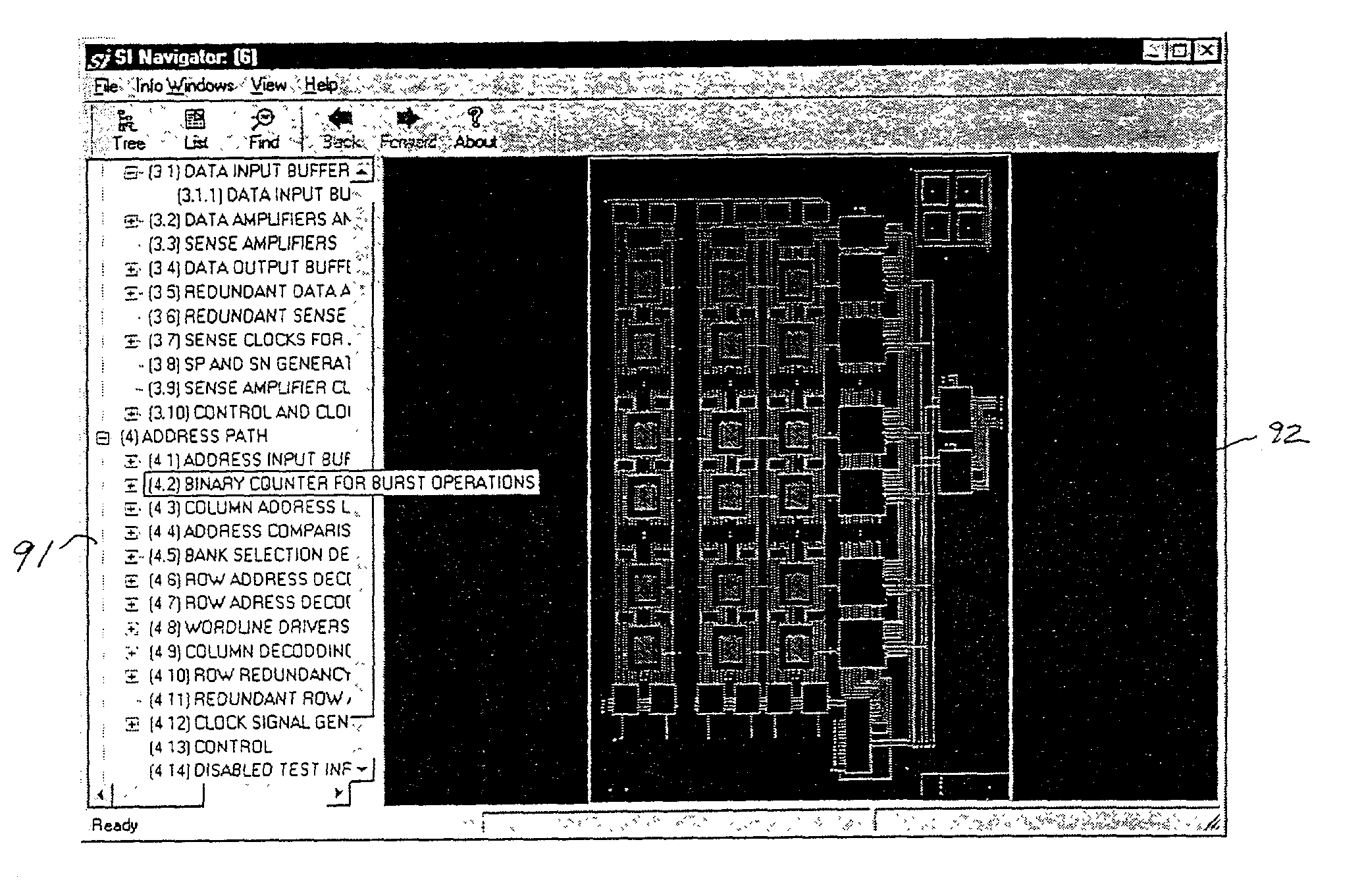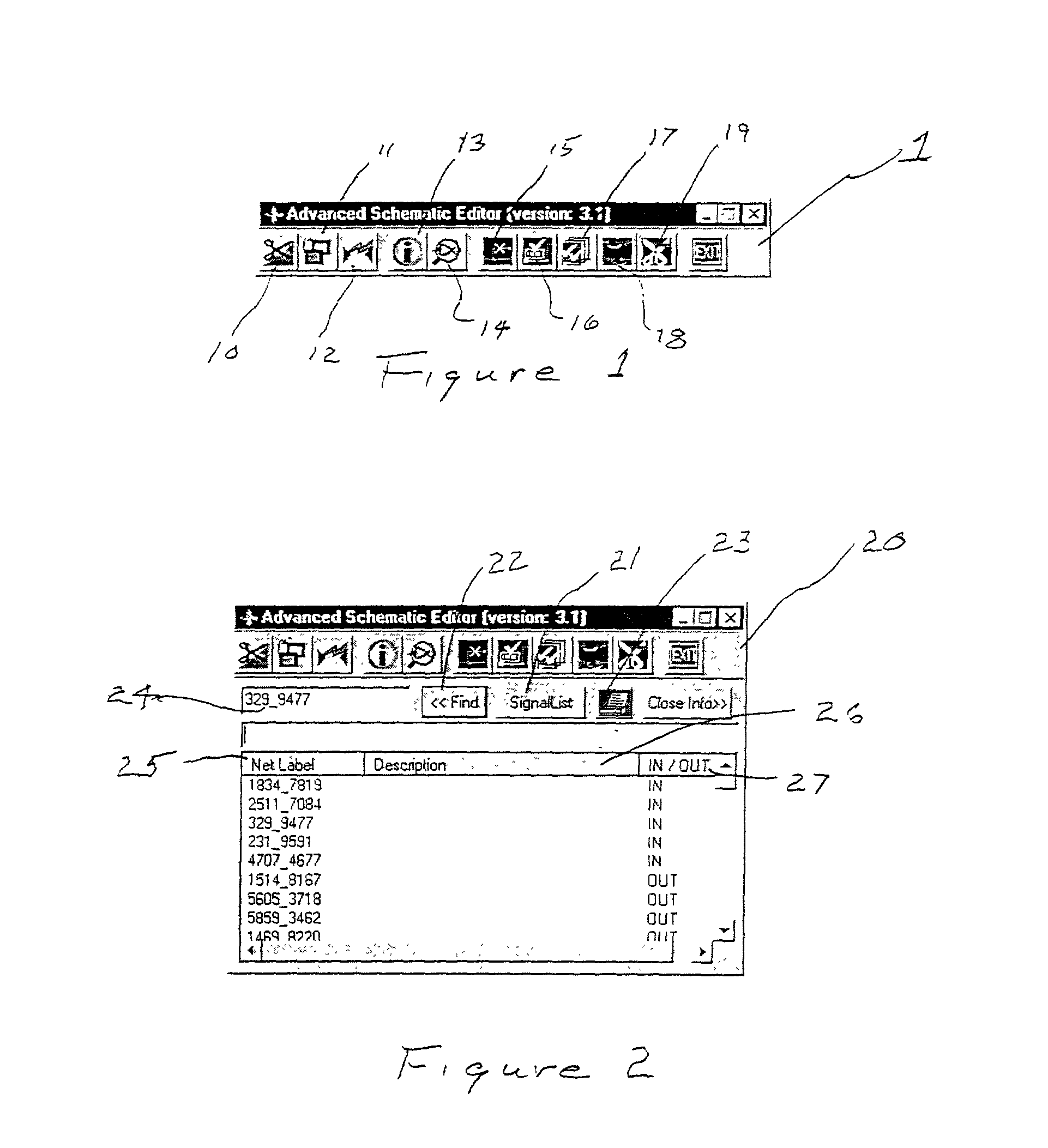Advanced schematic editor
- Summary
- Abstract
- Description
- Claims
- Application Information
AI Technical Summary
Benefits of technology
Problems solved by technology
Method used
Image
Examples
Embodiment Construction
[0049]The Advanced Schematic Editor (ASE) in accordance with the present invention is designed as an Object Linking and Embedding (OLE) controller software in order to be able to communicate with the ViewDraw application. The software utilizes Microsoft OLE technology to establish a link to ViewDraw view and document objects. Using this link, ASE has direct access to all active page objects such as labels, segments, components, and attributes of the schematics and the page itself. At the same time, the link allows ASE to modify objects and their properties. In an important addition to the OLE communication, ASE has direct access to the source file of the reverse engineered project. The access to the source files allows ASE to perform broader and more flexible searches and analyses of the objects and their properties throughout whole project.
[0050]The Advanced Schematic Editor (ASE) in accordance with the present invention provides routines for performing advanced functions with the ...
PUM
 Login to View More
Login to View More Abstract
Description
Claims
Application Information
 Login to View More
Login to View More - R&D
- Intellectual Property
- Life Sciences
- Materials
- Tech Scout
- Unparalleled Data Quality
- Higher Quality Content
- 60% Fewer Hallucinations
Browse by: Latest US Patents, China's latest patents, Technical Efficacy Thesaurus, Application Domain, Technology Topic, Popular Technical Reports.
© 2025 PatSnap. All rights reserved.Legal|Privacy policy|Modern Slavery Act Transparency Statement|Sitemap|About US| Contact US: help@patsnap.com



